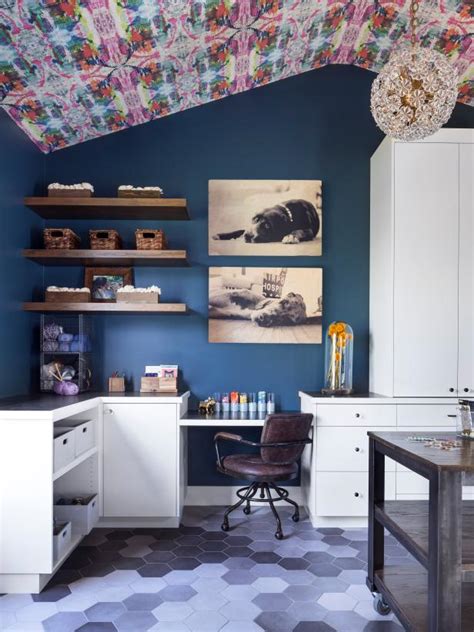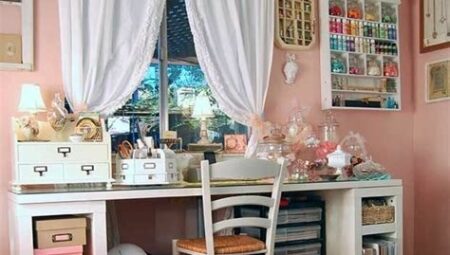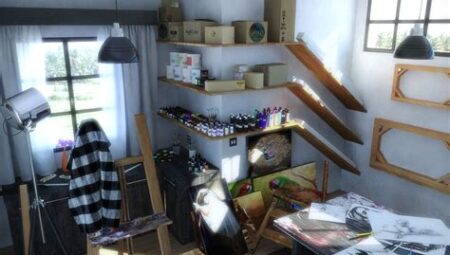Are you looking to transform your living space into a stylish and welcoming haven? Whether you’re a seasoned decorator or just starting out, finding inspiration for room decoration can be both exciting and overwhelming. In this blog post, we’ll explore how to infuse your personal style into your home decor while also incorporating your hobby of decorating. From choosing the right color palette to incorporating personalized art and accessories, we’ll cover it all. We’ll also discuss how to mix and match furniture styles to create a cohesive look and how to utilize natural elements for a refreshing and soothing atmosphere. By the end of this post, you’ll be equipped with the knowledge and inspiration you need to create a space that reflects your unique style and passion for decoration. Let’s dive in and get ready to unleash your creativity!
Choosing the Right Color Palette
When it comes to decorating your home, choosing the right color palette is a crucial step in creating the ambiance and style you desire. The colors you select will have a significant impact on the overall look and feel of your space, so it’s important to carefully consider your options. Whether you prefer a bold and vibrant aesthetic or a more muted and calming atmosphere, the color palette you choose should reflect your personal taste and preferences.
When selecting a color palette, it’s important to consider the size and natural light of the room. Darker colors can make a small space feel cozy and intimate, while lighter colors can help open up a room and create a sense of airiness. It’s also essential to think about the mood you want to convey. Warm colors such as reds, oranges, and yellows can create a welcoming and energetic atmosphere, while cooler colors like blues and greens can evoke a serene and calming vibe.
Another factor to consider when choosing a color palette is the existing furniture and decor in your space. Selecting colors that complement or contrast with your furnishings can help tie everything together and create a cohesive look. Additionally, it’s essential to think about the overall style and theme of your home when choosing a color palette. Whether you prefer a modern, traditional, or eclectic aesthetic, the color palette you select can enhance and bring out the best in your home’s design.
In conclusion, choosing the right color palette is a critical aspect of interior design that can significantly impact the look and feel of your home. By carefully considering factors such as room size, natural light, mood, existing decor, and overall style, you can select a color palette that reflects your personal taste and creates the ambiance you desire. Whether you opt for bold and vibrant hues or soft and neutral tones, the color palette you choose should inspire and uplift your living space.
Mixing and Matching Furniture Styles
When it comes to decorating a space, one of the most important aspects to consider is the furniture styles you choose. Mixing and matching different furniture styles can create a unique and visually interesting look in your home. It allows you to blend different design elements and create a space that is truly your own.
By combining modern and traditional furniture, you can add depth and character to a room. For example, pairing a sleek, contemporary sofa with a classic, vintage side table can bring a sense of balance and contrast to the space. This juxtaposition of styles can add visual interest and create a dynamic and eclectic look.
Another way to mix and match furniture styles is by incorporating pieces from different time periods. You can combine mid-century modern chairs with Victorian-era accent pieces, or mix Art Deco elements with Scandinavian design. This juxtaposition of different eras can create a sense of history and depth in your living space.
When mixing and matching furniture styles, it’s important to pay attention to scale and proportion. Make sure that the pieces you choose complement each other in terms of size and shape. This will help create a cohesive and harmonious look, rather than a cluttered or mismatched one.
Creating a Cozy and Inviting Space
When it comes to designing your living space, creating a cozy and inviting atmosphere is key to making your home feel warm and welcoming. One way to achieve this is by using warm, neutral colors such as soft browns, creams, and grays to create a calming and comfortable environment. These colors can be incorporated into your walls, furniture, and decor to help set the tone for a cozy space.
Another way to make your space feel cozy and inviting is by using soft and plush textures throughout your home. This can include fluffy throw pillows, cozy blankets, and plush area rugs that not only add comfort but also create a sense of warmth and coziness. You can also incorporate these textures into your furniture such as a soft, comfortable sofa or armchair to create a welcoming atmosphere.
In addition to colors and textures, lighting plays a crucial role in creating a cozy and inviting space. Soft, warm lighting can create a soothing ambiance, while dimmer switches can allow you to adjust the level of light to suit your mood. You can also add candles, fairy lights, and table lamps to create a cozy, intimate atmosphere in your living space.
Lastly, adding personal touches such as family photos, sentimental objects, and personalized artwork can help to create a cozy and inviting space. These items not only add character and personality to your home, but they also create a warm and welcoming environment that will make your space feel more like home.
Incorporating Personalized Art and Accessories
When it comes to decorating your home, one of the best ways to add a personal touch is by incorporating personalized art and accessories. Whether it’s a family photo collage, a custom-made sculpture, or an heirloom piece passed down through generations, these unique pieces can instantly add warmth and personality to any space.
One way to incorporate personalized art and accessories is by creating a gallery wall. This can be a collection of family photos, artwork from local artists, or even pieces collected from your travels. By arranging these pieces in a thoughtful and cohesive manner, you can create a visually stunning focal point in any room.
In addition to artwork, personal accessories such as throw pillows, blankets, and decorative objects can also help to infuse your home with your unique style. Whether it’s a vintage rug that has been in your family for years or a set of hand-painted vases from your favorite artisan, these pieces can add depth and character to your living spaces.
Ultimately, the key to incorporating personalized art and accessories is to choose items that have special meaning to you. Whether it’s a piece of art that evokes cherished memories or an accessory that reflects your personal style, these elements can transform your home into a reflection of your own unique identity.
Utilizing Natural Elements for a Refreshing Look
When it comes to designing a space, incorporating natural elements can be a game changer. Natural elements such as wood, plants, stone, and water can add a sense of tranquility and freshness to any space. These elements bring a touch of the outdoors inside, creating a serene and inviting atmosphere.
One way to utilize natural elements is by incorporating wooden furniture and accents. Whether it’s a beautiful wooden dining table, a rustic coffee table, or wooden shelves, the warmth and texture of wood can instantly elevate the look and feel of a room. Additionally, adding indoor plants can breathe life into a space, purifying the air and creating a sense of calmness.
Another way to bring natural elements into a space is by incorporating natural textures such as jute, sisal, and rattan. These materials can be used in rugs, baskets, and woven furniture, adding depth and visual interest. Furthermore, introducing natural colors such as earthy tones and soft greens can evoke a sense of harmony and relaxation.
Lastly, utilizing water features such as fountains or aquariums can add a sense of tranquility and serenity to a space. The sound of flowing water can create a soothing ambiance, making the space feel more refreshing and rejuvenating.
Frequently Asked Questions
How can I choose the right color palette for my room decoration?
When choosing a color palette for your room decoration, consider the mood you want to create. Soft, neutral colors can create a calming atmosphere, while bold, vibrant colors can make a statement. You can also use color theory to create a harmonious palette by selecting colors that are complementary or analogous.
What are some tips for mixing and matching furniture styles in room decoration?
To mix and match furniture styles effectively, consider the scale and proportion of each piece. Look for common elements such as color, shape, or material to tie the pieces together. Don’t be afraid to experiment with different styles and textures to create a unique and eclectic look.
How can I create a cozy and inviting space through room decoration?
To create a cozy and inviting space, focus on comfort and warmth. Incorporate soft textiles such as throw pillows, blankets, and area rugs. Use warm lighting and consider adding a fireplace or candles for a cozy ambiance. Personal touches such as family photos or sentimental items can also contribute to a welcoming atmosphere.
What are some ideas for incorporating personalized art and accessories into room decoration?
Incorporating personalized art and accessories into your room decoration can add character and reflect your individual style. Consider creating a gallery wall with family photos, mementos from travels, or artwork that holds personal meaning. Display cherished items on shelves or mantels, and don’t be afraid to mix in vintage or homemade pieces for a personal touch.
How can I utilize natural elements for a refreshing look in room decoration?
To bring the outdoors in and create a refreshing look, incorporate natural elements into your room decoration. Use houseplants to add greenery and a sense of vitality. Consider incorporating natural materials such as wood, stone, or woven textures for a rustic or organic feel. Natural light can also enhance the overall ambiance of the space.
What are some common mistakes to avoid when decorating a room?
Some common mistakes to avoid when decorating a room include overcrowding the space with too much furniture or accessories, neglecting proper lighting, and failing to consider the function of the room. It’s also important to avoid disregarding the scale and proportion of furnishings, as well as neglecting the importance of a cohesive color palette and overall theme.
How can I keep my room decoration versatile and easily adaptable for future changes?
To keep your room decoration versatile and easily adaptable for future changes, opt for foundational pieces of furniture in neutral colors and classic styles. This allows you to update the look with accessories, textiles, and artwork without needing to replace larger furniture items. Consider investing in multipurpose furniture that can serve different functions as your needs change.



